|
by Michele A. Miller, Editor, Old World Archaeology
When the editors of Athena Review
first discussed the prospect of focusing a future issue of the journal
on the antiquities trade, we had no idea how much the topic would be in
the news. After all, controversy about the role of the antiquities
trade in the encouragement of looting and site destruction has simmered
for decades. While long a topic of concern among archaeologists, the
connections between the antiquities market and looting was brought to
wider public awareness at least as early as the publication of Eric
Meyer’s The Plundered Past
in 1977. Yet until recently, only limited consequences of this
connection have been manifest while the market itself has continued to
grow exponentially — not only in terms of sheer numbers of
objects being bought and sold, but also in the market’s expansion
into formerly obscure regions, and in the sophistication of the
procurement and movement of these objects. Notably, not only are the
points brought up by Meyers about the connection between collecting
antiquities and the looting and destruction of archaeological sites
still very much in debate, but some of the specific examples he cited,
such as the Euphronios krater and its 1972 acquisition by the
Metropolitan Museum of Art (see Case Study 1, pp.27-30), have become
internationally celebrated cases. It is clear that the conflict between the dealers,
collectors and museums who support the antiquities market, and the
archaeologists, source nations, and others who want to restrict such
trade, is becoming more pronounced. Almost daily there are reports in
the news about the provenience of a particular object in a museum
collection, the destruction of archaeological sites by looting, notably
in Iraq (figs.1-3), or the legal battles of a dealer, collector or
museum. Furthermore, the looting and sale of antiquities worldwide
continues to grow even as the laws of both “source” and
“purchase” countries intensify. Meanwhile, the general
public is slowly beginning to consider the ethics of both private
collecting and museum acquisitions. The debate, discussed in these
pages, centers on several issues, including the importance of the
object itself over that of cultural context and the rightful
“ownership” of these objects, be it by source country or
worldwide culture. Further pages discuss who is responsible for
reducing the flow of illegal goods (be it site workers, the local
authorities, or the collectors) and possibl  e methods for controlling
the illicit market, such as broad government legislation, specific legal cases, or self-policing by the market. e methods for controlling
the illicit market, such as broad government legislation, specific legal cases, or self-policing by the market.
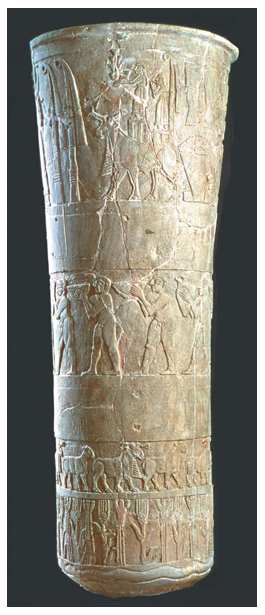 Until recently, the antiquities market remained a
small and relatively obscure activity, in which a tightly-knit group of
traders often worked hand-in-hand with scholars in their regional
specialties. Those who currently support the market include the dealers
and collectors who engage in it, as well as many museums who rely on
new acquisitions to enhance their collections, and increase their
attendance, revenues, and world prominence. Archaeologists most often
vociferously oppose the market, but they are accompanied by various
government officials of “source” countries who attempt to
control the removal of cultural materials from their lands. Other
scholars, such as art historians, epigraphers, and regional specialists
are more ambivalent towards the market, usually depending on how their
own research relies on the study of goods available primarily through
the market. Legal experts are found on both sides of the issue. As the
quantity of goods passing from place of origin to buyer increases,
however, and the sources of desired goods continues to widen, opinions
and responses to the market are becoming more polarized.
Until recently, the antiquities market remained a
small and relatively obscure activity, in which a tightly-knit group of
traders often worked hand-in-hand with scholars in their regional
specialties. Those who currently support the market include the dealers
and collectors who engage in it, as well as many museums who rely on
new acquisitions to enhance their collections, and increase their
attendance, revenues, and world prominence. Archaeologists most often
vociferously oppose the market, but they are accompanied by various
government officials of “source” countries who attempt to
control the removal of cultural materials from their lands. Other
scholars, such as art historians, epigraphers, and regional specialists
are more ambivalent towards the market, usually depending on how their
own research relies on the study of goods available primarily through
the market. Legal experts are found on both sides of the issue. As the
quantity of goods passing from place of origin to buyer increases,
however, and the sources of desired goods continues to widen, opinions
and responses to the market are becoming more polarized.
Fig.1:
The Warka Vase (ca. 3500-3000 BC) was taken from the Iraq National
museum during its looting in April 2003, then returned to the Museum
two months later. This sculptured limestone libation vase from the
Sumerian city of Uruk (biblical Erech, modern Warka) depicts offerings
to the fertility goddess Innin during the New Year’s Festival (Scala / Art Resource, NY).
Arguments against the antiquities market:
Many arguments of the anti-market group usually represent the
perspective of archaeologists, whose profession involves the study and
preservation of ancient sites. This group sees a direct correlation
between the antiquities market and the looting of archaeological sites.
From this viewpoint, collecting (and therefore purchasing) creates the
initial demand for a particular class of archaeological artifacts.
Increasingly high prices paid for these objects on an open market fuels
this demand, and the end result is the looting of further sites to
increase supply of these objects.
The antiquities market also encourages
forgeries and
other chicanery when looting fails to meet growing demand. One example
is the kouros acquired in 1985 by Jiri Frel, the first Curator of
Antiquities at the J. Paul Getty Museum, for $9 million (see Case Study
2 on the Morgantina Venus, p. 31).
From the archaeologist’s perspective, looting
not only destroys a site’s stratigraphy (the layering of cultural
material and sediment that defines the site’s chronology) as well
as its architectural remains, but also removes the desired objects from
the context which, to archaeologists, provide them with cultural
meaning. Such context is vital for uncovering information about the
cultures which produced the objects — the ultimate goal of
archaeological research. Forgeries and fakes also obscure this context
by creating false information which must be weeded out. It is thus
understandable that archaeologists are professionally opposed to any
activities that lead not only to the physical destruction of the
materials they study, but also the lo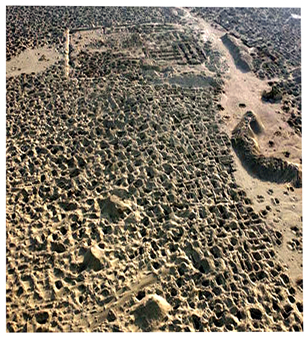 ss of scientific information which
is just as important as the artifacts themselves. ss of scientific information which
is just as important as the artifacts themselves.
In support of the archaeologist’s view,
various studies have shown that market demand can lead (and has led) to
increased looting. Two British archaeologists, for instance,
Christopher Chippindale and David Gill (2000), have revealed how a new
market for cruciform marble figurines, advanced by a few collectors,
lead to the looting of archaeological sites in the Cyclades. In
response, treaties between the US and source countries to prevent the
illegal export of antiquities from these countries into the US have
been shown to decrease looting (IFAR 2005).
Fig.2: Umma (Tell Jokha),
an ancient Sumerian town in southern Iraq dating from the Ur
III period (ca. 2500-2000 BC), is filled with looters’
pits, and is a major source of black market artifacts including
cuneiform tablets (photo: USAID).
Members of the anti-market group, therefore, have
often turned to laws and regulations to decrease the demand of the
antiquities market. The hope is that through increased legislation,
fewer antiq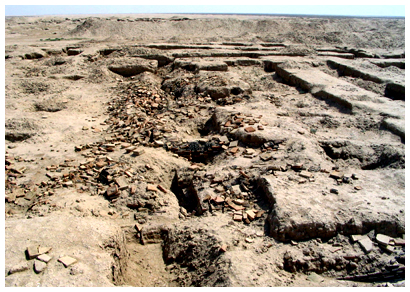 uities will be able to be legitimately sold on the market.
Some members of this group would even prefer that the buying and
collecting of all antiquities — even those of known and
legitimate provenance — be considered socially and ethically
objectionable, much like the destruction of endangered species for
economic ends. They would, in effect, hope that the conservation of
sites becomes as mainstream as support for the conservation of the
environment. uities will be able to be legitimately sold on the market.
Some members of this group would even prefer that the buying and
collecting of all antiquities — even those of known and
legitimate provenance — be considered socially and ethically
objectionable, much like the destruction of endangered species for
economic ends. They would, in effect, hope that the conservation of
sites becomes as mainstream as support for the conservation of the
environment.
Fig.3: Detail of looters’ pits amid house foundations at Umma in March, 2004 (photo: REUTERS/ Luke Baker).
In support of the market:
The arguments of the pro-market group are more varied and complex, as
well as more pragmatic. Many collectors and dealers publicly disavow
any relationship between their activities and looting. Most make
the distinction between “legitimate” trade in antiquities
(i.e. objects removed from their context before the UNESCO treaty of
1972) and illegal black market activities, although some have remarked
that the burden of proof should not be on them to determine the true
provenance of an artifact (Atwood 2004). They feel that it is the
responsibility of source countries to stop looting by more tightly
protecting archaeological sites, rather than regulating the sale of
antiquities in the US and other countries.
Here, again, one of the major issues in the debate
centers on the importance of context, already referred to, in
discussing the archaeologist’s perspective. From archaeologist to
art historian to collector to dealer, one could expect a diminishing
concern for context. For the art historian and collector, antiquities
are desirable primarily as objects of beauty and historical interest.
For the dealers and some collectors, on the other hand, the objects are
desired more for their monetary value, rather than as tools of
scientific research. While art historians and most collectors value
these objects for their connection with the past, it is apparent that
the specific archaeological context is usually less important. The
result is that for a majority of antiquities displayed in art museums,
specific contexts are unlisted and unknown. In fact, as Christina Luke
points out in this issue (pp.46-54), when legislation may prevent the
marketing of objects from a specific region, the provenience and find
context of antiquities for sale from this region may be deliberately
obscured.
It may be that much of the museum-going public has
relatively little of the archaeologist’s concern for information
on an artifact’s context. For collectors, dealers, and some art
historians, one consequence of this attitude is that ancient objects
are differently valued according to design, material, and whether they
came from certain much-esteemed cultures, such as the Classical Greeks
and Romans, or the Ancient Maya. Furthermore, a known provenance (i.e.
the sequence of past ownership), especially an association with a
prominent collection, will increase the value of an object. All of
these factors ultimately convey upon the artifact a monetary value by
which it is bought and sold. Artifacts can make their way into the
market, as in the case of the Morgantina Venus (see Case Study 2,
pp.32-38), through a number of hands — from dealer to collector
to museum — and then, frequently, end up as financial investments
which can be easily hidden in a vault or private estate or publicly
displayed, then donated and written off for tax purposes.
Despite this financial connection, dealers and
collectors often see themselves as the true stewards of antiquities. To
them, the archaeologists are an elitist clique, who try to control
access to archaeological materials for scientific study, but do not
truly love these objects for their intrinsic human value and beauty,
and are often not interested in their public display. For instance,
Frederick Schultz, as head of the New York-based National Association
of Dealers in Ancient, Oriental, and Primitive Art, argued that it is
the international antiquities market — together with the private
and public collections it supplies — that preserves ancient
treasures and disseminates their beauty and influence across the globe
(Vincent 2005). This attitude opposes the archaeologists who would keep
these objects in the ground or in a local museum. Supporters of the
antiquities trade note that many source countries, such as Italy,
maintain warehouses and storerooms filled with thousands of
uncatalogued artifacts, many of which are “rotting away”
without being seen by the public. They contend that, through the
market, these objects could be seen and appreciated by people
throughout the world.
Museum curators generally would agree with this
view. Many curators argue that if they lose the ability to acquire
‘new’ artifacts, museums would also decrease their ability
to reach out to the public and provide them with new information about
past cultures (IFAR 2005). Oddly, these same curators often do not
discuss the loss of information due to the lack of provenience of many
of these same objects. In a similar way, those scholars who agree to
study and publish artifacts on the market or in a collection justify
this decision by pointing out the loss of information if such materials
were not studied at all, while those that agree to authenticate such
objects explain that there is a ‘obligation to see’ what is
out there and keep track of looted objects (Meyer 1977:19). While
it is true that many important artifacts have only entered the public
consciousness through the market (i.e., the Maya codices; see also C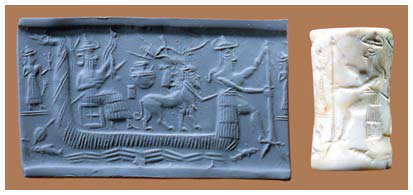 ase
Study 3), these scholars must weigh the worth of the information gained
in the study of illicitly gained materials against the cost of
encouraging further looting, as the authentication and publication of
such objects must inevitably increase their value. ase
Study 3), these scholars must weigh the worth of the information gained
in the study of illicitly gained materials against the cost of
encouraging further looting, as the authentication and publication of
such objects must inevitably increase their value.
Fig.4: An Akkadian seal
from ca. 2200 BC, whose roll-out impression (seen at left) shows
a reed boat with a Mesopotamian sun god and a human. This seal is
similar to others lost in the looting of the Iraq Museum in Baghdad (photo:Oriental Institute of the University of Chicago).
This latter point rides on the issue of who
‘owns’ world heritage. On the one hand, museums (and
prominent collectors who lend objects to museums) argue that these
objects are significant to a global heritage, and therefore should not
be controlled by source nations. In this view, prominent museums such
as the Metropolitan must be able to acquire and exhibit objects from
around the world in order to educate the public about world
culture. Thus, having learned to appreciate the objects they have
seen in museums, the public will be more likely to respect and preserve
the cultures that produced them. Also, without these worldwide
repositories, only those people financially able to travel to foreign
lands would have the ability to see and learn about these
cultures. In reality, of course, this reputable goal is in fact
hampered by the fact that so little is known about the context of the
majority of artifacts on display. Furthermore, it can be said
that only a fraction of antiquities on the market actually make it to a
museum; the remainder are hidden from the public in private
collections. Also, the differential market value placed on some
types of artifacts (figurative, precious materials, etc.) means that a
greater quantity of ‘everyday’ objects from a particular
culture may never be seen by the public, thus skewing their view of
past cultures.
Some museums, however, like the Metropolitan, have
responded to the public’s interest in viewing everyday objects by
opening study collections. These allow visitors to view smaller or
fragmentary materials typical of archaeological digs, such as
potsherds, stone tool-making debitage, and charred food remains.
Finally, supporters of the market argue the human
desire to acquire is too strong and even if it could be curtailed in
one country (if say, legislation and social attitudes make it harder to
collect in the US) it is likely to increase in others where a new
wealthy class has emerged (e.g. China). Simply spoken, many
dealers justify purchases of questionable objects with a form of
‘if I don’t buy it someone else will’ retort (Meyer,
p. 190) that has all the subtlety of a schoolyard excuse.
Recently there has been a backlash among certain
scholars — primarily those studying ancient texts — against
restrictions by professional scholarly associations on publishing
studies of unprovenanced (and thus likely looted) artifacts. Over 100
scholars in the United States and Europe have signed a controversial
statement, drafted by Lawrence E. Stager of Harvard University and
posted on the website of Biblical Archaeology Review,
which asserts that the publishing restrictions of some scholarly
associations are excessive, forcing them to “close their eyes to
important information.” Although it states that they
“recognize that artifacts ripped from their context by looters
often lose much of their meaning,” it also states that “On
the other hand, this is not always true, and even when it is, looted
objects, especially inscriptions, often have much of scholarly
importance to impart.”
The protesters are specifically referring to the
publication rules of the two leading professional associations for
scholars of Classical and Near Eastern antiquity, the Archaeological
Institute of America (AIA) and the American Schools of Oriental
Research (ASOR). Some of the scholars have even accused the journals of
censorship. The publishers, however, note that this is an unfair
characterization of their guidelines. The AIA, for instance, merely
bans its journals from being the first to publish unprovenanced works.
ASOR’s 1995 ethics policy states, “ASOR publications and
its annual meeting will not be used for presentations of illicit
material.” It also includes a special policy allowing for
publication of unprovenanced cuneiform texts if permission is first
obtained from the Iraq State Board of Antiquities and Heritage.
Recent developments:
Since the 1977 publication of Meyer’s survey of the antiquities
market, many things have changed. Roger Atwood noted in Stealing
History (2004) that the market itself has become more global and
sophisticated. Objects from remote regions that were once beyond the
interest or reach of collectors now enter the market within days of
their discovery. Looting of sites, once often a family-run activity of
a few people working after dark with pick-axes and shovels, now also
involves a multinational, organized business often involving hundreds
of employees and large, complex equipment such as metal detectors,
backhoes, and bulldozers. Beyond this are behind-the-scenes financial
manipulations, and the object’s devious route from looter’s
trench to collector’s shelf.
Recently, however, those that do buy unprovienced
artifacts have been subject to ever increasing scrutiny, which has had
a dampening effect on the most flagrantly illicit dealings of the
antiquities market, if not in the actual number (or dollar amount) of
objects traded. In effect, as dealers, museums and collectors have
encountered the increasing prospect of legal action, their knowledge of
the origin of such objects has conveniently decreased, just as the
actual route an object may have taken from original context to ultimate
collection has become further convoluted and obscured. In essence, it
is no longer enough to state that any particular object has come from
“an old family collection,” although it seems that
purchasing from a seemingly reputable source is still enough to protect
most buyers from legal action. Many dealings are now hidden under a
“Don’t Ask, Don’t Tell” policy for uncovering
provenience; if you haven't been told the object came from an
archaeological site then you cannot be liable if it is proved that the
object was looted.
Another development of the antiquities market
expansion lies in the much-widened access to the acquisition of ancient
artifacts due to the growth 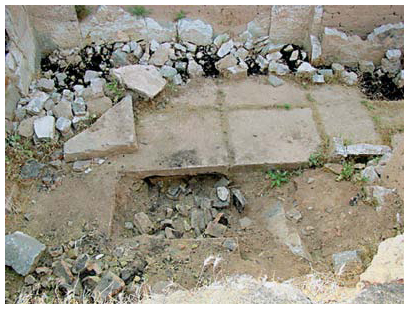 of the internet, and its widely used
trade forums. Since the advent of the internet as a major vehicle for
retail of all kinds, anyone with a computer can now
purchase an endless variety of antiquities — most of minor
significance or monetary value — with a few strikes of the
keyboard and a credit card. The effects of this on the antiquities
trade worldwide, while not yet studied in great detail, has doubtless increased the business in forgeries and petty thefts. of the internet, and its widely used
trade forums. Since the advent of the internet as a major vehicle for
retail of all kinds, anyone with a computer can now
purchase an endless variety of antiquities — most of minor
significance or monetary value — with a few strikes of the
keyboard and a credit card. The effects of this on the antiquities
trade worldwide, while not yet studied in great detail, has doubtless increased the business in forgeries and petty thefts.
Fig.5: Damaged relief
slabs from recent looting at the Palace of Sennacherib at Nineveh in
northern Iraq. Ninevah, capital of Assyria, was destroyed in 612 BC by
the Medes and Babylonians. The palace, decorated with reliefs showing
army exploits, was uncovered by Henry Layard in 1847. The reliefs have
been appearing for sale since the mid-1990s (photo: Joanne Farchakh -Journalist/Archaeologist 2003).
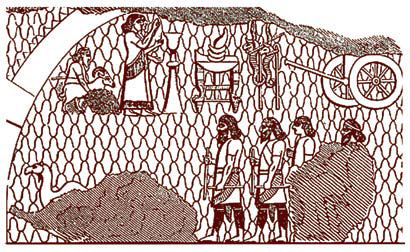 Other developments in the last thirty years have
been the formation of organizations such as the International
Foundation for Art Research (IFAR), World Monuments Fund (WMF) and most
recently, Saving Antiquities for Everyone (SAFE) which disseminate
information about the destruction of archaeological sites and the role
of the antiquities market to a broader public.
Other developments in the last thirty years have
been the formation of organizations such as the International
Foundation for Art Research (IFAR), World Monuments Fund (WMF) and most
recently, Saving Antiquities for Everyone (SAFE) which disseminate
information about the destruction of archaeological sites and the role
of the antiquities market to a broader public.
Fig.6:
Relief fragment from the Palace at Nineveh, which Russell (1996) has
shown is from a larger scene of Sennacherib’s military camp in a
mountainous region. The top portion shows Assyrians making an offering
before two standards or poles with horned dragons or serpents attached
(Layard 1849).
Legislation:
Over the past few decades there have been many advances in regulating
and addressing looting and the black market in antiquities. The first
major international agreement was UNESCO’s 1970 Convention on the
Means of Prohibiting and Preventing the Illicit Import, Export, and
Transfer of Ownership of Cultural Property. This agreement, signed by
the US in 1972, created a legal framework allowing participating
governments to negotiate for the return of looted items. Then in 1983
Congress passed the Cultural Properties Implementation Act (CPIA),
which established a process by which source nations could request the
US to import bans on archaeological material originating within their
borders (box 3, p.34). So far, such import bans have been requested and
granted to several nations, while a current request from China remains
a subject of debate (IFAR 2005).
Precedent has also been set for other legal action
in the US pertaining to looted artifacts. Among the most
important cases is McClain vs. the United States. This 1977 case
concerns Patty McClain, an appraiser, who was arrested for carrying
Pre-Columbian antiquities across the Mexican border into the US. In
that judgment, the US Court of Appeals for the 5th Circuit in New
Orleans, using Mexican law to define stolen archaeological
property, upheld McClain’s conviction. This case has been
successfully used
as precedent in other cases, such as the 1995 confiscation by US
Customs agents of a 3rd-4th century BC Sicilian gold phiale, purchased
by the now retired financier Michael Steinhardt from the New York
dealer, Robert Haber, for $1.2 million. In February 1995, Italian
authorities requested the US government's help in retrieving the
phiale, which they claimed was part of Italy's cultural patrimony. (A
1939 Italian law claims state ownership of all antiquities located in
Italy, except for those privately owned before 1902; see Case Study 2
on the Morgantina Venus, p.31.) Using the guidelines of the National
Stolen Property Act (NSPA), US officials agreed the phiale was stolen
property. But as Steinhardt’s defenders noted, Italy had not
requested import restrictions under the CPIA. McClain vs. the United
States permitted Italy to assert its state ownership laws in American
courts, thus turning the phiale into stolen property under US law.
Steinhardt unsuccessfully appealed in 1997, and the phiale was returned
to Italy (Vincent 2005).
In another case (July 2001), US federal
prosecutors accused Frederick Schultz of selling antiquities smuggled
from Egypt. The star witness against the dealer was antiq
uities
restorer Jonathan Tokeley-Parry, who claimed that from 1990 to 1994 he
purchased numerous items, including statuary from Egyptian natives, and
used his restoration skills to disguise them as tourist tchotchkes, or
souvenirs, which could be safely exported from the country. His actions
violated Egyptian Law 117, which states that any antiquities found
within the country’s borders are state-owned and thus cannot be
exported or sold. Tokeley-Parry evidently turned against Schultz in
order to shorten a prison sentence in England involving other smuggled
Egyptian antiquities. He testified that Schultz sold these and other
illegally acquired objects to Western collectors, claiming they
originated from the fictitious “Allcock Collection,”
supposedly begun in the 1920s. In response, Schultz claimed to be an
innocent associate of Tokeley-Parry’s. Since Egypt had never
requested import restrictions as required by the CPIA, justification
for declaring Tokeley-Parry’s objects as “stolen
property” fell under Law 117. The US District Judge applied
McClain and upheld the government’s contention that, under US
law, Tokeley-Parry stole objects from Egypt and that Schultz knowingly
sold these artifacts. Schultz was found guilty of conspiring to handle
stolen property, and in 2002 was sentenced to 33 months in prison and a
$50,000 fine (Vincent 2005).
Media coverage:
Despite legal developments, the greatest catalyst for changing public
attitude toward the antiquities market may be the worldwide press
coverage of the looting of the National Museum of Iraq and its
unparalleled collection of Mesopotamian artifacts. After the First Gulf
War (1991), several museums were looted. Then, during the US
invasion of Baghdad in 2003, news agencies reported that a vast number
of objects, approximately 170,000, had been looted from the Iraq
museum. This created a media flurry on the responsibilities of warring
nations to protect cultural heritage. Later, it was revealed that the
true number of stolen artifacts was more in the range of 10,000. Many
of the most famous Mesopotamian artifacts, such as the Warka Vase
(fig.1) were removed for their own protection, although thousands
of lesser known, more easily marketable pieces still remain at large (figs.4,5).
While stories about the destruction of the Iraqi
museum may have been initially exaggerated, more recent reports have
centered on the even more tragic looting of archaeological sites
— both previously studied and largely undiscovered —
throughout the country (figs.2,3,5). Local police do not have the
manpower to stop these sometimes quite sophisticated looting
operations. Even well-known, and supposedly protected, sites have not
escaped this wreckage. Archaeologist John Russell (1996) has shown how
well-documented artifacts, such as the famous stelae of Nineveh, have
been hacked off and sold to market (figs.5,6). Legislation was passed
in 2004 to restrict the import to the US of items known to have come
from looting in Iraq, although its effectiveness has not yet been
determined.
Even before the public became aware of the
devastation of looting in Iraq, the press was reporting many examples
from other regions around the globe. Among these was the 2001
destruction of the gigantic Buddha sculptures in Bamiyan by the
Taliban, which received worldwide castigation (AR 3:2). More recent
concern has centered on the wholesale looting of important
archaeological sites in Afghanistan (fig.7). Less well known is the
fact that the Taliban, and the Mujahideen warlords preceding them, were
supporting their terrorist activities by the sale of looted artifacts
on the black market, perhaps including the so-called Buddhist Dead Sea
Scrolls (see Case Study 3, pp.39-44). Meanwhile, newly discovered sites
in Iran, identified as the Jiroft culture, and considered of equal
importance with contemporary Mesopotamian and Harrapan cultures, are
only now b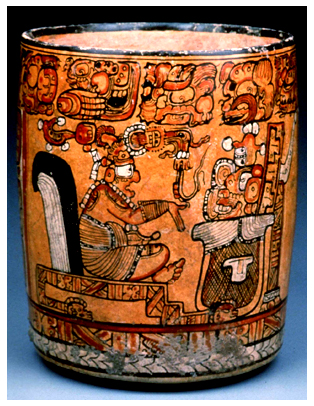 eing scientifically studied, after large-scale looting has
flooded the market with both authentic and forged Jiroft artifacts. eing scientifically studied, after large-scale looting has
flooded the market with both authentic and forged Jiroft artifacts.
Many similar examples have also been reported from
Maya sites in Guatemala and Mexico. During the past decade, the
Guatemalan government has been actively pressing for the return of
looted pottery and other artifacts in US Museums (fig.8; see also
article by Luke, pp.46-54).
Fig.8: A Late Classic Maya
drinking cup (AD 593-830) in the collection of Boston's Museum of Fine
Arts, one of the items that the Guatemalan government alleges was
looted from grave sites in Guatemala and illegally exported in the
1970s and 1980s (photo: REUTERS/Ho New).
Museums and the antiquities trade:
the current antiquities debate has taken on a more serious tone as
source countries such as Italy, based on decades of research by their
Carabinieri art-theft squad, have begun more rigorously defending their
cultural patrimony through the use of the courts against major US
museums. In a broad-scale effort to retrieve stolen artifacts, during
the past few years the Carabinieri has conducted thorough
investigations of the antiquities collections of several prominent US
museums, including the Metropolitan Museum of Art in New York (see Case
Study 1, p.27), the J. Paul Getty Museum in Los Angeles (see Case Study
2, pp.32-38), and the Museum of Fine Arts (MFA) in Boston.
In what is sure to be a landmark
case, the Italian authorities since late 2005 have pursued charges
against Marian True, former Curator of Antiquities of the J. Paul Getty
Museum and Robert Hecht, a prominent antiquities dealer. The two have
been charged with both trading in stolen objects, and conspiracy to
trade in stolen objects with dealers named and unnamed. Under a 1939
Italian law, artifacts found in archaeological sites belong to the
state, and any antiquities excavated after that date can leave the
country only on loan.
The investigation began in 1995 when a police raid
on warehouses in Geneva, Switzerland owned by Giacomo Medici, a
prominent Italian art dealer recovered not only looted objects, but a
large cache of photographs of art that Italian investigators now argue
were stolen or illegally exported from Italy. About 35 of the objects
in these photographs were in collections of the Getty Museum.
Accompanying the photographs were lists of names of Mr. Medici’s
clients, some of which appear to have led the investigators to the
Getty museum and its curator. Among the most prominent of the artifacts
was a statue of Aphrodite or Venus (see Case Study 2, on the Morgantina
Venus).
Italian authorities have indicated that they hope
this case will act as a strong deterrent to the further theft and
export of antiquities from their country. Already it has created
shock-waves throughout American museums and the collecting community.
The naming of True as a defendant, in fact, was particularly
unforeseen, as under her curatorship the Getty adopted a more stringent
antiquities acquisition policy, and she herself supported Italy’s
1999 request for import restrictions under CPIA. Yet internal Getty
memos obtained by the Los Angeles Times suggest that despite this
reputation, the museum was not completely unaware of the shady origins
of many of its acquisitions. For instance, an internal review by the
museum's lawyers found that more than half of the 104 antiquities
identified by the Getty as “masterpieces” were obtained
from suppliers under investigation. In one particularly telling memo,
Mr. Hecht wrote to Ms. True that an ancient Etruscan urn that the Getty
was interested in acquiring had been listed as stolen by the Italian
police. Apparently this did not deter the museum, which purchased
the pot anyway.
With the media spotlight focused on the Getty museum
and the continuing trial of former antiquities curator Dr. Marion True,
US museums including the Metropolitan, the Boston Museum of Fine Arts,
and the Getty have been cooperating with the Italian government. The
threat of legal action and unfavorable media coverage, as well as fear
of damaging vital relationships with Italy and other source countries
(critical for exhibits requiring works of art on loan), has forced many
other US museums to re-evaluate their acquisition policies or at least
publicly defend them.
The Metropolitan Museum of Art, New York:
In February 2006, Metropolitan Museum of Art Director Philippe de
Montebello signed an agreement with Rocco Buttiglione, Italy’s
Minister of Culture, as well as Giuseppe Proietti, a senior official in
charge of cultural heritage, to return twenty-one prestigious objects
to Italy, including the Euphronios krater (see Case Study 1, pp.27-30).
The krater was recently returned to Italy in January 2008, nine months
after the opening of the museum’s new galleries for Etruscan,
Hellenistic, and Roman art. Furthermore, after indisputable evidence
surfaced on the Hellenistic silver collection thought to come from
Morgantina, it was decided that this would also be returned in 2010
(see box 2, p.31). In return, Italy has promised to supply the Met with
equally valued artifacts from its collections. The loans -— for
up to four years — will be determined from a list submitted by
the Met, which then must be approved jointly.
The terms of the agreement called for the immediate
return of four painted pottery vases that were cited as evidence in the
prosecution of antiquities dealer Giacomo Medici. These include a
red-figured Apulian dinos (340 to 320 BC) attributed to the Darius
Painter, a red-figured psykter (ca. 520 BC) decorated with horsemen, a
red-figured Attic amphora (ca. 490 BC) by the Berlin Painter, and a
sixth-century Laconian kylix, or drinking cup (Povoledo 2006, 2007).
In a public statement published in the New York
Times in February, 2006, de Montebello said that, “this is the
appropriate solution to a complex problem, which redresses past
improprieties in the acquisitions process through a highly equitable
arrangement.” This suggests that the agreement has ushered in a
new era of cooperation through exhibits and research and heightened
scruples among the collecting community, with the realization that
former acquisition policies are in need of reform.
In their investigations of the Met, Italian officials also have
turned their attention to the collection of Shelby White and Leon Levy
(the latter died in 2003). Levy and White contributed many ancient
objects to the Met’s Greek and Roman department, and donated the
majority of funds used to restore and refurbish the Roman and Etruscan
collections, now exhibited in a hall named for them. This new museum
section not only includes a major collection of Roman frescoes and
Hellenistic through Roman sculpture, pottery, and jewelry, but also a
substantial study collection (see article on Etruscan Chariot, p.14).
The Levy White collection has also established of a
fund at Harvard University to support the publication of archaeological
work, which has so far distributed $9 million to more than a hundred
scholars. They have largely financed the excavations at the site of
Askelon in Israel conducted by Lawrence Stager, Harvard’s Dorot
Professor of the Archaeology of Israel.
Some archaeologists, however, such as Randall White
of New York University (AR 2:4), have made it clear that they refuse to
participate in research funded by Levy-White. Concern arose over the
fact that that some 84% of the objects in the 1990 Met exhibit entitled
“Glories of the Past: Ancient Art from the Shelby White and Leon
Levy Collection” had no known or published provenience
(Chippindale and Gill 2000). The exhibit catalog was edited by curator
Dietrich von Bothmer (1990).
On January 16, 2008, the Italian Culture
Ministry announced, after 18 months of negotiations, the return to
Italy by the Levy White collection of ten Greek and Etruscan
antiquities. As part of the agreement, the Met will retain a 580 BC vessel signed by the painter Euphronios until 2010 (see
also Case Study 1, p. 30).
The J. Paul Getty Museum:
The Getty Museum, located in Malibu, California, has for the past few
years been the focus of scrutiny in regards to several cases where
Greece and Italy have requested the return of artifacts that they
believed had been looted. In 1993, antiquities curator Dr. Marion
True purchased three items from ancient Greece for the Getty
collection for a total of $5.2 million. These artifacts included a
marble torso or kore of a young woman (fig. 10), a 4th century BC grave
stela, and a 4th century BC golden funerary wreath (fig.11).
Three years later (1996) Greece issued a formal
request for the return of these items, plus one other disputed artifact
housed at the Getty Museum, a 6th century BC votive relief from the
island of Thassos, originally purchased by J. Paul 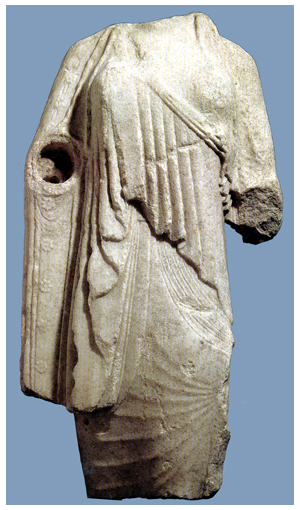 Getty in 1955
(fig.9). Getty in 1955
(fig.9).
The Greek request remained dormant for approximately
ten years. After the initiation of the Italian trial against True,
however, Greek officials reopened their investigation in November 2005,
seeking to prove that the disputed artifacts had been illegally
smuggled out of Greece. By July 2006, the Getty formally agreed to
return two of the items, including the 6th century BC votive relief
(fig.9) and the 4th century BC grave marker, after being shown evidence
that they had been looted. In September 2006, the two artifacts went on
display at the National Archaeological Museum in Athens (Felch and
Frammolino 2006).
Fig.10: 6th century BC marble torso of a young woman (kore), returned to Greece by the Getty Museum on December 11, 2006 (photo: REUTERS/Ho New).
Greece continued to press for return of the other
two items. The fragmentary marble kore or torso of a young woman
(fig.10) is believed to date from the late 7th-early 6th century BC.
Pictures seized during the 1995 raid of Medici’s warehouses in
Geneva, Switzerland showed the kore among other looted items, with dirt
still in its folds.
The 4th century BC gold funerary wreath (fig.11) was
first viewed by Marion True in 1992, when she traveled to Zurich to
meet its owner, identified as a Dr. Preis, who was asking $1.6
million for the work. True apparently much admired the wreath,
decorated with realistic sprays of gold leaves and flowers and inlaid
with colored glass paste attached to a 28 cm headband. Yet files from
an internal Getty review held in 2001, later published by the Los
Angeles Times, show she had expressed misgivings about it, indicating
that it was “too dangerous for us [the museum] to be involved
with” (Felch and Frammolino 2006).
Six months later, nevertheless, True purchased the
wreath for $1.15 million from Christopher F. Leon, an art dealer and
intermediary in Basel, Switzerland. At purchase, the source of the
wreath was listed as “private collection, Switzerland.”
Prior to the purchase, the Getty notified the Greek cultural ministry
of their intentions. The Greeks responded that the wreath, dating from
320-300 BC, had probably been excavated in the Greek province of
Macedonia, and was offered as a burial gift after the death of
Alexander the Great (Felch and Frammolino 2006). Despite this claim,
the museum went ahead with the purchase.
As part an ongoing campaign to recover looted
artifacts, the Greek cultural ministry officially filed charges on
November 22, 2006 against True for knowingly buying an artifact of
illicit origins for the Getty collection. Others charged included two
Greek citizens accused of digging up the wreath (Georgios Tsatalis and
Georgios Kagias), a Serbian national, L.J. Kovacevic, who put the two
diggers in touch with a middleman, and Christopher Leon, the Swiss
dealer who sold the wreath to the Getty. As part of their own
investigation, the Italians supplied Greek authorities with a photo of
the wreath fou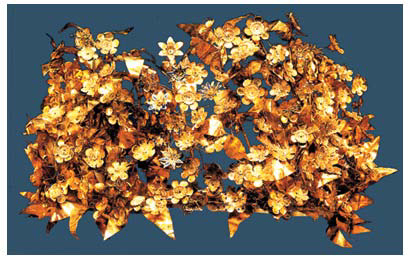 nd in the file of another Italian dealer. This evidence
contributed to the Getty’s decision to return the artifacts to
Greece. nd in the file of another Italian dealer. This evidence
contributed to the Getty’s decision to return the artifacts to
Greece.
Fig.11: Greek golden funerary
wreath, returned by the Getty Museum to Greece in December, 2006 and
now on display at the National Archaeological Museum in Athens (photo: REUTERS/Ho New).
Getty Director Michael Brand has taken positive
steps to restore relations between the two countries. Brand and Greek
Culture Minister Giorgos Voulgarakis announced on December 11, 2006 an
agreement regarding the return of the kore and gold funerary wreath to
Greece (Getty Museum 2006). Mr. Voulgarakis stated that this resolution
would now allow for the establishment of cultural cooperation between
the US and Greece, including long-term loans (Paphitis 2006). On March
28, 2007, the two items went on display at the National Archaeological
Museum in Athens.
Eight months later, in November 2007, an appeals
court in Athens dismissed the criminal case against Marion True, for
conspiring to acquire the gold wreath bought by the Getty in 1993. In a
motion for dismissal, True’s lawyer cited a California state law
that sets a three-year statute of limitations for prosecutions, after
the location of a stolen artifact is established. Greek law requires
its courts to defer to the statute of limitations in the country where
the acquisition was made (Carassava 2007).
True still faces lesser charges in
Greece. In 2006, Greek authorities raided True’s island villa in
Paros, confiscating 29 ancient artifacts ranging from a pair of
Hellenistic marble sarcophagi to a Byzantine icon. On May 4, 2006,
charges were pressed against True for the illegal possession of these
artifacts .In the same year, 280 artifacts ranging from a Roman marble
sculpture of Aphrodite to two granite sphinxes, were seized in raids on
two properties linked to the late Christo Michailidis, a London-based
art dealer who supplied the Getty (and the Levy-White collection) with
Greek, Roman and Etruscan antiquities (Carassava 2006, 2007).
Museum of Fine Arts, Boston:
In the fall of 2006, after a year of negotiations, the Museum of Fine
Arts in Boston (MFA) followed in the footsteps of New York’s
Metropolitan Museum, by agreeing to fully cooperate with the Italian
government regarding its collections. The MFA first came under Italian
scrutiny through its dealings with Robert Hecht, who had sold or given
116 objects to the museum (Edgers and Celeste 2005).
Prosecutors in the True-Hecht trial noted that in
photographs seized in raids of Hecht’s Paris home in 2000, as
well as those found in Medici’s Swiss warehouse in 1995, three
ancient objects appeared which had been purchased by the MFA. These
include two pottery vessels, one from the Apulia region of southern
Italy, and a six foot marble statue of the Roman empress Sabina.
Italian prosecutor Paolo Ferri said the photographs indicated that some
items acquired by the MFA were pulled out of ancient tombs in the
1970s. Apulian vases were typically buried in tombs in Southern Italy.
These photos led investigators to compile a list of forty-two
suspicious objects in the MFA’s collection, sixteen of which had
been connected with Hecht (Edgers and Celeste 2005).
The Sabina statue was bought by the MFA on November
14, 1979 from Zurich dealer and restorer Fritz Bürki, with Robert
E. Hecht acting as agent (for more information on Bürki and Hecht,
see Case Studies 1 and 2). Regarding the statue’s provenance or
prior ownership, the MFA reported it was “said to have been in an
aristocratic family collection in Bavaria” (MFA
2006b).
Following lengthy discussions with the Italian
Ministry of Culture, the MFA signed an agreement on September 28, 2006
to arrange the transfer back to Italy of the statue of Sabina, a
sculptural fragment of Hermes, and eleven painted vases from ca.
500-250 BC. These items were placed on display for the week of October
10, 2006 at the Museo Nazionale Romano di Palazzo Massimo, before going
to museums in their historical territories (Italian Culture Ministry
2006; Edgers and Pinto 2006). MFA Director Malcolm Rogers stated that
“this partnership with the Italian government heralds an exciting
new era of collaboration by making the world’s greatest artistic
treasures available to the broadest possible audience.” (MFA
2006a).
The Italian government has praised the MFA for its
cooperation, and has agreed to loan significant works from Italian
museums to the MFA’s displays and special exhibition programs.
The first loan received by the MFA in November 2006 was a nine-foot
high marble statue of Eirene (Goddess of Peace), from the 1st century
AD. This was excavated in 1986 at a Roman villa 35 km northeast of
Rome. Although the head and torso of the Eirene statue were displayed
separately in Italy, the two pieces have been joined together for the
first time by MFA conservators.The statue will be displayed in the
museum’s Roman court gallery until 2009.
The MFA is meanwhile engaged in negotiations for
artifact returns by other countries, including Turkey and Guatemala
(fig.8). A Turkish law was passed in 1906 establishing state ownership
of archaeological finds. Encouraged by recent Italian successes with US
museums, the Turkish government has claimed that one of the MFA’s
most prized objects, the 27-inch upper part of a 2nd century AD statue
of Herakles, was stolen in 1980 from an excavation site in
southern Turkey.
This statue, known as the “Weary
Herakles, is a Roman copy of a 4th century BC bronze statue by
the Greek master Lysippos of Sikyon. In its complete form, it shows the
Greek demigod Herakles leaning on a club covered with the skin of the
Nemean lion. The statue is now broken into upper and lower fragments.
According to the MFA (2008), a half share in the upper fragment was
purchased by the Museum from a dealer in 1981 with funds donated by the
Jerome Levy Foundation. The remaining half share was later donated to
the MFA in 2004 by Leon Levy and Shelby White.The sculpture was
displayed in the 1990 Levy White exhibit at the Met.
The lower portion of the statue was found in
1980 by Dr. Jale Inan in an excavation in Perge (Antalya) on the south
coast of Turkey, and is now on display in Antalya Museum, along with a
photograph of the upper half. In 1992, casts of the two fragments of
the Weary Herakles were found to fit perfectly.
Turkish authorities believe the statue was broken
during excavation by looters shortly before its acquisition by the Levy
White collection. The MFA says the statue may have broken in ancient
times, and the upper half may have been removed from Turkey before the
1906 law came into effect.
Egypt:
In March 2006, Zahi Hawas, secretary general of Egypt’s Supreme
Council of Antiquities (SCA), threatened to take legal action against
the St. Louis Museum of Art (SLAM) for the return of an ancient mask
that had been in the museum’s collection since 1998. Originally,
the 19th dynasty (1307-1196 BC) wood and plaster mask of Ka-nefer-nefer
was excavated in the Saqqara area some 25 km south of Cairo in 1952,
and subsequently registered and stored at a nearby warehouse. Only
recently did Egyptian officials realize the mask had been stolen
sometime between 1959 and 1990 (Kaufman 2006). Upon being
informed that it was in St. Louis, they requested its return, but the
museum refused. When the museum later failed to meet an ultimatum for
the mask’s return, Egypt began legal proceedings in May 2006. St.
Louis Museum Director Brent Benjamin is taking the claim seriously and
states that there will be a thorough investigation of the mask’s
ownership, with the hopes of reaching a fair resolution, possibly a
long-term loan arrangement with Egypt.
Peru:
Complex issues surround Peru’s request for the return of objects
from Machu Picchu, recently featured in a major touring exhibition by
Yale University’s Peabody Museum (AR 3:4). The royal Incan
retreat of Machu Picchu (fig.12) was 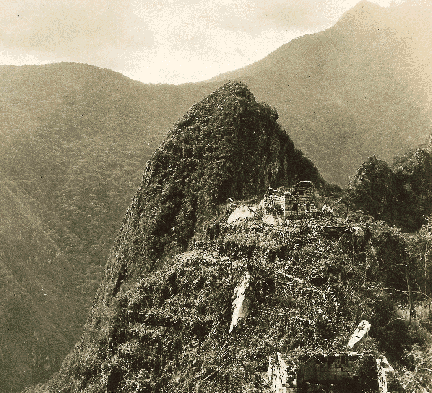 rediscovered in 1911 by Yale
history professor Hiram Bingham III and a small group of native guides.
In three separate expeditions (two of them funded by Yale and the
National Geographic Society), Bingham mapped and excavated part of the
site. In the process, he removed hundreds of objects and shipped them
back to Yale, including pottery, jewelry, musical instruments, and
human burials. rediscovered in 1911 by Yale
history professor Hiram Bingham III and a small group of native guides.
In three separate expeditions (two of them funded by Yale and the
National Geographic Society), Bingham mapped and excavated part of the
site. In the process, he removed hundreds of objects and shipped them
back to Yale, including pottery, jewelry, musical instruments, and
human burials.
Fig.12: View of Machu Picchu (Bingham 1912).
These were supposed to be returned to Peru shortly
thereafter, but have remained at Yale’s Peabody Museum through
the present. When the museum hosted its multimedia exhibition on Machu
Picchu in 2005, the Peruvian government negotiated to have
Bingham’s material returned. Yale subsequently offered to return
a significant portion of the collection and assist Peru in its
installation at a new museum near the site. Yet Peruvian officials
would not agree to any joint projects until Yale acknowledged that all
of the objects belonged to the Peruvian people. Yale refused to do
this, adding that “the civil code of 1852, which was in effect at
the time of the Bingham expeditions, gave Yale title to the artifacts
at the time of their excavation and ever since.” Even those
strongly in favor of the return of illicitly obtained artifacts admit
this is not a clear-cut case. The artifacts were not looted by
fortune-seekers, but excavated with government permission in a manner
considered scientific at the time, and thereafter stored and studied in
a research-oriented facility.
In September of 2007, Yale and Peru reached an
agreement where Peru was given full title to all of the items. Some of
the artifacts, including bone fragments and other objects, will remain
at Yale for study. Yale and Peru have established an extensive
collaborative research relationship that will include the building of a
research center and museum in Cuzco, the closest city to Machu Picchu,
of which Yale will serve as advisor. (Kennedy 2007). A program of
scholarly exchange between Peru and Yale has also been established.
Both parties praised the resolution, calling the deal “a new
model of international cooperation providing for the collaborative
stewardship of cultural and natural treasures.”
[Additional research and writing were done for this article by D. Rickenbrode].
References:
Agence France Presse. 2006. “Egypt threatens to sue US museum over ancient mask.” The Nation (30 March 2006).
Atwood, R. 2004. Stealing History. St. Martin’s Press, New York.
Balter, Michael. 2006. “$200 Million Gift Triggers Backlash at NYU.” ScienceNOW Daily News (28 March 2006).
Bingham, H. 1913. “In the Wonderland of Peru.” National Geographic Vol.XXVII, no.4.
Carassava, A. 2006. “Greek Officials Planning to Bring Charges Against Ex-Curator.” New York Times (5 May 2006).
Carassava, A. 2007. “Greek Court Dismisses Case against Ex-curator.” New York Times (28 Nov. 2007).
Chippindale, C. and D. Gill. 2000. “Material Consequences of Contemporary Classical Collecting,” Amer. Jour. Archaeology
Eakin, H. and R. Kennedy. 2005. “Doubts on Donors’ Collection Cloud Met Antiquities Project.” New York Times (10 Dec. 2005).
Eakin, H. 2006. “Must Looted Relics Be Ignored?” New York Times (2 May 2006).
Edgers, G. 2005. “The MFA is approaching Italian authorities.” Boston Globe (5 Nov. 2005).
Edgers, G. and S. Celeste. 2005. “Case in Italy suggests MFA received stolen art.” Boston Globe (5 Nov. 2005).
Edgers, G. and S. Pinto. 2006. “MFA agrees to return disputed art to Italy.” Boston Globe (31 July 2006).
Felch, J. and N. Zirganos. 2006. “Greek Officials Raid House of Ex-Getty Curator.” Los Angeles Times (2 Apr. 2006).
Felch, J. and R. Frammolino. 2006. “Getty Set to Return Two Greek Works.” Los Angeles Times (11 Dec. 2006).
Harman, D. 2006. “90 years later, Peru battles Yale over Incan artifacts.” Christian Science Monitor.
Getty 2006. “Hellenic Republic Ministry of Culture and the J. Paul Getty Trust Issue Joint Statement.” Press Release. J. Paul Getty Museum. (11 Dec. 2006).
IFAR 2004/2005. “Should the US Grant China’s Request for an Art-Import Ban? Pros and Cons. Introduction.” IFAR Journal
Kaufman, J. E. 2006. “This mask belongs to Egypt.” The Art Newspaper (15 Feb 2006).
Kennedy, R. 2006. “Italy Lends Antiquities to Two Museums.” New York Times (29 Nov. 2006).
Kennedy, R. 2007. “Yale officials agree to return Peruvian artifacts.” New York Times (16 Sept. 2007).
Layard, A. 1849. Ninevah and Its Remains. London, John Murray.
Meyer, K. 1977. The Plundered Past. NY. Atheneum.
MFA 2006a. "Museum of Fine Arts, Boston and Italian Ministry of Culture Sign Agreement Marking New Era of Cultural Exchange." Press Release. Museum of Fine Arts, Boston (28 September 2006).
MFA 2006b. "Deputy Prime Minister of Italy Unveils Ancient Masterpiece on Loan to the Museum of Fine Arts, Boston." Press Release. Museum of Fine Arts, Boston (28 November 2006).
MFA 2008. Collections. Museum of Fine Arts, Boston. (http://www.mfa.org/collections/). 7(7:3,4):20-23 104:3: 463-512.
Orson, D. 2006. “Peru Seeks Return of Machu Picchu Artifacts.” National Public Radio.
Paphitis, Nicholas. 2006. “Getty Museum to Return Two Greek Treasures.” Associated Press (11 Dec. 2006).
Pogrebin, R. 2006. “$200 Million Gift Prompts a Debate Over Antiquities.” New York Times (1 Apr. 2006).
Povoledo, E. 2006a. “Antiquities Trial Resumes in Rome.” New York Times (18 Oct. 2006).Povoledo, Elisabetta. “Top Collector Is Asked to Relinquish Artifacts.” New York Times (29 Nov. 2006).
Povoledo, E. 2006b. “Top Collector Is Asked to Relinquish Artifacts.” New York Times (29 Nov. 2006).
Richter, G. 1959. A Handbook of Greek Art. New York, Phaedon Press Limited.
Russell, J. 1996. “Stolen Stones: The Modern Sack of Ninevah.” Archaeology Online Features (30 Dec.1996).
Sanderson, R. 2005. “Getty trial spotlights Italy tomb raiders.” Reuters (12 Dec. 2005).
Vincent, S. 2005. “Ancient Treasures for Sale: Do antique dealers preserve the past or steal it?” Reasononline (April 2005).
Von Bothmer, D. et al. 1990. Glories of the Past: Ancient Art from the Shelby White and Leon Levy Collection (exhibition catalog). The Metropolitan Museum of Art.
This article appears on pages 16-24 of Vol.4 No.3 of Athena
Review.
|
|